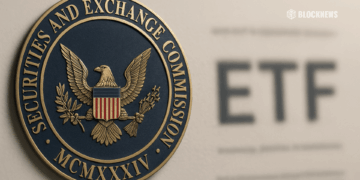Clear regulatory guidelines could provide clarity and a safe space for innovation for businesses in the crypto industry, according to the International Monetary Fund (IMF). This could be achieved through cooperation and collaboration to address cryptocurrency adoption’s regulatory, legal, technological, and supervisory challenges.
In a September 2022 publication, the IMF acknowledged that cryptocurrencies are fast becoming mainstream, but policymakers still struggle to monitor the risks associated with the market.
“Crypto assets have been around for more than a decade, but it’s only now that efforts to regulate them have moved to the top of the policy agenda.”
The Challenging Crypto Regulation Environment
The international financial institution pointed out that the crypto space’s rapid growth poses challenges to applying existing regulatory frameworks to digital assets or developing new ones. The publication notes that crypto assets have moved from being viewed as “niche products” in search of a purpose to mainstream properties interlinked with the regulated economic systems while still being unregulated within a few years.
The IMF noted that the rapid growth of cryptocurrencies concerning the market value and those mentioned above “creep into the regulated financial system” calls for increased efforts to regulate them.
“Regulators struggle to acquire the talent and learn the skills to keep pace given stretched resources and many other priorities. Monitoring crypto markets is difficult because data are patchy, and regulators find it tricky to keep tabs on thousands of actors who may not be subject to specific disclosure or reporting requirements”, the report says.
The IMF called for a global regulatory framework that is:
- 1. Comprehensive: To cover all participants, all aspects, and areas of the crypto space.
- 2. Consistent: Ensure that the developed rules align with mainstream regulatory procedures.
- 3. Coordinated: This would help fill the gaps arising from “cross-sector and cross-border issuance” and ensure that the playing field is fair for every participant.
The fund acknowledged that developing such a robust regulatory framework is complex, giving several reasons. Among them is the ever-changing crypto ecosystem requiring regulators to regularly update on technological advancements. In addition, monitoring transactions and network activities are not easy, particularly when user anonymity is involved.
Moreover, there is no universally accepted terminology for various features of the crypto space. For example, it is hard for legislators to reconcile traditional regulations with new terms such as validators, miners, and protocol governance. Actors in the conventional financial market are usually allowed to engage in specific activities on a limited scale.
As such, authorities may be forced to understand how the underlying blockchain technology is used to build cryptocurrencies and their ecosystems and how that measures against other public policies and objectives. Issues such as the amount of energy used in “mining” some cryptos and their use cases need careful consideration when developing crypto regulation.
In my opinion, the development of crypto regulation is not an event. It is a dynamic process that should continuously improve as the underlying technology advances, and new crypto assets are built. It requires open dialogue, transparency, and public participation to ensure that it is “comprehensive, consistent and coordinated,” as suggested by the IMF.
The IMF publication was written by Aditya Narain, deputy director of the IMF’s Monetary and Capital Markets Department, and MARINA MORETTI, an assistant director in the IMF’s Monetary and Capital Markets Department.














